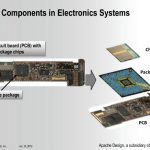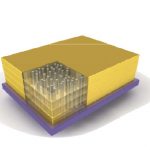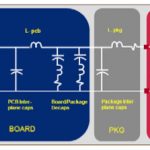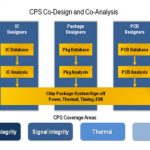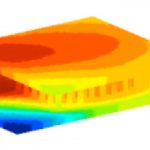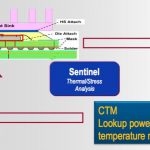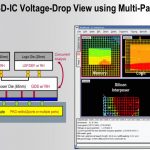Aveek Sarkar presented a webinar on chip-package-system (CPS) earlier this summer. One of the big challenges with low-power electronic systems is that the performance, power and price goals are mutually conflicting. It’s like the old joke about “pick any 2”. But for a real system all need to be optimized. … Read More
3D Memories
At DesignCon earlier this year, Tim Hollis of Micron gave an interesting presentation on 3D memories. For sure the first applications of true 3D chips are going to be stacks of memory die and memory on logic. The gains from high bandwidth access to the memory and the physically closer distance from memory to processor are huge.
Micron… Read More
Power, Signal, Thermal and EMI signoff
Increasingly the challenge with SoCs, especially for mobile, is not getting the performance high enough but doing so in a power-efficient manner. Handheld devices running multiple apps need high-speed processors that consume extremely low levels of power both in operating and standby modes. In the server farm, the limit is … Read More
Chip-Package-System Solution Center
One of the really big changes about chip design is the way over the last decade or so it is no longer possible to design an SoC, a package for it to go in and the board for the package using different sets of tools and methodologies and then finally bond out the chip and solder it onto the board. The three systems, Chip-Package-System have… Read More
3D Thermal Analysis
Matt Elmore of ANSYS/Apache has an interesting blog posting about thermal analysis in 3D integrated circuits. With both technical and economic challenges at process nodes as we push below 28nm, increasingly product groups are looking towards through-silicon-via (TSV) based approaches as a way of keeping Moore’s law… Read More
Apache Low Power Webinars
For those of you who didn’t get to DAC you can catch up on low power issues with Apache’s series of low-power webinars taking place late in July. All webinars are at 11am Pacific Time. Full details and registration on the Apache website here.… Read More
TSMC Theater Presentation: Apache
At the TSMC Theater Apache (don’t forget, now a subsidary of Ansys) talked about Emerging Challenges for Power, Signal and Reliability Verification on 3D-IC and Silicon Interposer Designs. The more I see about the costs and challenges of 20/22nm and below, the more I think that these 3D and 2.5D approaches are going to be … Read More
Apache Ansys Update 2012
Apache is one of the brightest stars in the EDA universe. Paul McLellan has done a nice job covering them before and after the Ansys acquisition. Check out the Apache SemiWiki landing page HERE. The Apache wikis are also very well done and it has been a pleasure working with the Apache marketing team. Expect more innovative things … Read More
Customers Talk About Reliability, Low-Power and 3D
At DAC in San Francisco this year, Apache once again have a mixture of presentations by customers on their use of Apache tools and presentations by Apache themselves on their products. Most of the customer presentations are given just once, but the product presentations are given multiple times over the three days.
I think one of… Read More
RedHawk: On to the Future
For many, maybe most, big designs, Apache’s RedHawk is the signoff tool for analyzing issues around power: electromigration, power supply droop, noise, transients and so on. But the latest designs have some issues: they are enormous (so you can’t just analyze them naively any more than you can run a Spice simulation… Read More


